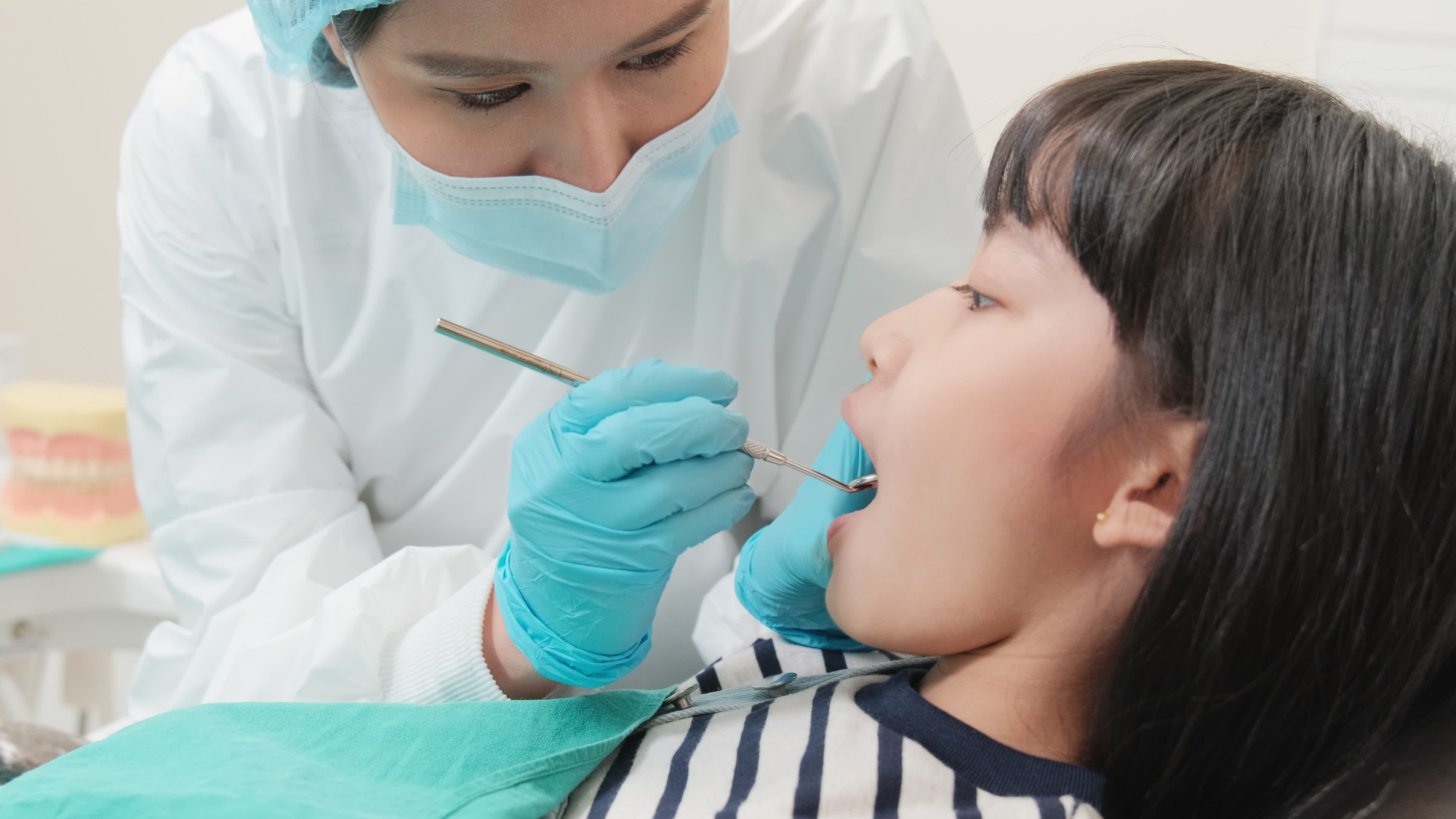Health
Child Dentist in Singapore Helps Fix Dental Malocclusions in Children

Dental malocclusions refer to improper alignment of teeth or a misfit in the jaws. It is best to consult a child dentist in Singapore if you suspect this issue in your child.
Thanks to their training in children’s oral health, a qualified child dentist in Singapore can identify and address malocclusions early. This is vital for proper development and growth modulation, ensuring that your child’s teeth and jaws form correctly. Early intervention through procedures like growth modulation can prevent more serious dental issues later on.
What Causes Malocclusion in Children?
If you suspect that your baby could be having malocclusion, you may wonder, what causes malocclusion in children? Here’s a good answer;
Malocclusion in children can stem from a variety of factors. Incidentally, this is what makes it a complex issue. Genetics and environment may play significant roles but key among the main causes of malocclusion in children though are prolonged thumb sucking and having inadequate space between baby teeth.
Prolonged thumb-sucking or finger-sucking past the age of 5 can contribute to malocclusion because this habit exerts pressure on the developing teeth and jaw. This continued pressure may lead to misalignment.

As for the inadequate space between baby teeth, when permanent teeth emerge, they are larger and necessitate more room. In cases where this space is insufficient, malocclusion may ensue. This emphasizes the importance of monitoring your child’s oral development during the transition from baby to adult teeth.
As earlier mentioned, in some instances, inherited traits may also be a factor. Certain dental conditions and jaw structures can be passed down through generations and increase the likelihood of malocclusion.
Environmental elements, like dietary habits, oral hygiene, and potential injuries, can also contribute. That said, it is crucial for you as a parents or a caregiver to be aware of these factors and seek timely intervention from a knowledgeable child dentist in Singapore if malocclusion is suspected.
This early attention could just be what you need prevent potential complications. It can also facilitate growth modulation, ensuring a healthy and properly aligned smile for your child’s future.
What is the most Common Malocclusion in Children?
There are different types of malocclusions so if you’re referred to a child dentist in Singapore for malocclusion; it is natural to wonder; what is the most common malocclusion in children? Now, there are three primary classes of malocclusion.
Each of these classes is based on the bite and the alignment of upper and lower teeth. The most common malocclusion in children is class 1 malocclusion. In class 1 malocclusion, the bite is generally normal. However, there’s a slight overlap of the upper teeth over the lower teeth.
Although it’s the mildest form, untreated class 1 malocclusion can lead to issues like crowding, and difficulty in cleaning teeth. It also comes with a greater risk of tooth decay and gum disease. The other classes of malocclusion you may also want to know about include classes 2 and 3 malocclusions;
- Class 2 Malocclusion (Retrognathism or Overbite): Class 2 malocclusion, often referred to as retrognathism or overbite, is a more severe form. In this case, the upper jaw and teeth significantly overlap the lower jaw and teeth. A class 2 malocclusion can cause problems with speech, chewing, and jaw joint discomfort. It may also affect facial aesthetics and self-esteem.
- Class 3 Malocclusion (Prognathism or Underbite): Class 3 malocclusion, known as prognathism or underbite, is another significant misalignment. In this type, the lower jaw protrudes or juts forward. This may lead to the lower jaw and teeth overlapping the upper jaw and teeth. An untreated Class 3 malocclusion can result in difficulty chewing, speech issues, and potential jaw joint problems.

What is the most Effective Treatment for Malocclusion?
Your best bet against malocclusion is early intervention. It is key to addressing this condition effectively.
If your baby is diagnosed with malocclusion, there are varied treatment options they may recommend. Key among these includes;
Braces
Braces work by applying a gentle, consistent force to shift misaligned teeth into proper alignment. This process involves reshaping the underlying bone in the tooth socket, to create a lasting correction.
In children with malocclusions, braces play a key role. They effectively guide teeth into their correct positions, correcting issues like overcrowding, overbites, or underbites.
This not only improves aesthetics. It also promotes proper jaw function. The growth modulation aspect is vital here, as early intervention with braces can steer the natural growth of teeth and jaws in the right direction, averting potential complications down the
Removing teeth
As you now understand, overcrowding of teeth in a child’s mouth may lead to misalignment issues. If overcrowding is diagnosed, your child dentist in Singapore might recommend tooth extraction to create more space.
This procedure aids in growth modulation and ensures teeth align properly. However, it’s not a one-size-fits-all solution.
Extraction is advised on a case-by-case basis. The key factors usually considered include the severity of malocclusion and overall oral health.
Using tooth alignersTop of Form
Tooth aligners are a highly effective solution for malocclusion in children. Just like braces, these clear, removable devices gently guide teeth into their proper positions.
They are recommended when malocclusions are detected early, ideally during the mixed dentition stage, around ages 7-10. This is when a child’s permanent teeth begin to emerge. Regular check-ins with a child dentist will track progress and ensure optimal results
Surgery of the jaw
Jaw surgery for malocclusion may be recommended if your child dentist suspects that the condition inherited issues or improperly healed fractures persist. This procedure, performed by skilled surgeons, realigns the jaw, to ensure proper bite and facial symmetry.
It’s recommended if non-invasive measures prove insufficient. Age-wise, it’s typically considered after skeletal maturity, often in the late teens.
Early intervention, however, is key for growth modulation and preventing future complications. Trust in your kids dentist and an experienced oral surgeon to guide you through this process.
It’s a Wrap!
There are several options for malocclusions management so don’t wait till the problem gets out of hand. If you suspect that your baby could be having a malocclusion, have them assessed by a knowledgeable child dentist in Singapore and an appropriate treatment started. To learn more about treatments for malocclusion in Singapore and the options available for your baby call or visit a skilled pediatric dentist at An Dental at;
An Dental – Orchard Dentist | Dental Implant | Wisdom Tooth Extraction | Kids Dentistry Singapore
People Also Reading:
Breathing Easy: Understanding Air Quality and Its Effects on Health
Breathing Easy: Understanding Air Quality and Its Effects on Health
Health
Report Causes Pfizer Stock to Climb Approximately $1 Billion Acquired by Starboard

(VOR News) – According to a rumor that activist investor Pfizer Starboard Value has taken a holding in the struggling pharmaceutical business that is expected to be worth around one billion dollars, the stock of Pfizer (PFE) is on the increase in premarket trading on Monday.
This comes after the report was made public. The report was made available to the general public following this. Starboard Value was successful in moving forward with the acquisition of the position.
Starboard is said to have approached Ian Read, a former chief executive officer of Pfizer, and Frank D’Amelio, a former chief financial officer, in order to seek assistance with its goals of boosting the performance of the company, according to the Wall Street Journal. Read and D’Amelio are both former Pfizer executives.
The purpose of this is to facilitate the accomplishment of its objectives, which include enhancing the overall performance of the firm.
In their previous jobs, D’Amelio and Read were chief financial officers.
It is stated in the report that the hedge fund is of the opinion that Pfizer, which is currently being managed by Albert Bourla, who succeeded Read as Chief Executive Officer (CEO) in 2019, does not demonstrate the same level of mergers and acquisitions (M&A) discipline that Read did. Bourla took over for Read in 2019. Read was succeeded by Bourla in the year 2019.
Pfizer, a multinational pharmaceutical conglomerate, has made substantial investments in the acquisition of more companies that are involved in the research and development of cancer medicines.
These businesses have been acquired for billions of dollars. The biotechnology company Seagen, which was acquired by Pfizer in the previous year for a price of $43 billion, is included in this category. One of the businesses that can be classified as belonging to this category is Seagen.
In spite of the fact that the S&P 500 Index experienced a 21% increase in 2024.
No major trading occurred in Pfizer stock that year.
Due to the fact that the demand for Pfizer’s COVID-19 vaccines fell after the firm reached its pandemic peak in 2021, the share price of the corporation has decreased by over fifty percent since that time.
This drop has occurred ever since the company’s shares reached their maximum peak, which was during the time that this decline occurred. Not only have they not changed at all, but they have also remained essentially stable. This is in contrast to the S&P 500, which has gained 21% since the beginning of this year.
Recently, the corporation was forced to take a hit when it decided to recall all of the sickle cell illness medications that it had distributed all over the world.
Fears that the prescription could lead patients to experience severe agony and possibly even death were the impetus for the decision to recall the product. In spite of the fact that Pfizer’s stock is increasing by almost three percent as a result of the news that followed the company’s decision, this is the circumstance that has come about.
SOURCE: IPN
SEE ALSO:
New Study Reveals Drinking Soda Pop Increases the Risk of Stroke
The Mpox Vaccine’s Protection Decreases Within a Year; Booster Requirements
Health
New Study Reveals Drinking Soda Pop Increases the Risk of Stroke

A recent report from global research indicates that excessive consumption of coffee or soda pop is associated with an increased risk of stroke, although the intake of black and green tea is correlated with a reduced risk. Excessive consumption of soda pop or coffee warrants caution!
Recent research indicates that it may substantially elevate the risk of stroke.
Consuming four cups of coffee daily elevates the risk of stroke, according to studies, although ingesting 3-4 cups of black or green tea daily typically offers protection against stroke. Additionally, consume more coffee; it may reduce your risk of mortality.
Recent findings from global research studies co-led by the University of Galway and McMaster University, alongside an international consortium of stroke researchers, indicate that soda, encompassing both sugar-sweetened and artificially sweetened variants such as diet or zero sugar, is associated with a 22 percent heightened risk of stroke. The risk escalated significantly with the consumption of two or more of these beverages daily.
Stroke Risk Fizzy Drinks and Soda Pop
The correlation between fizzy drinks consumption and stroke risk was most pronounced in Europe, the Middle East, Africa, and South America. Women exhibit the most elevated risk of stroke from bleeding (intracranial hemorrhage) associated with fruit juice beverages. Consuming over 7 cups of water daily diminishes the likelihood of stroke due to a clot.
Researchers observed that numerous items advertised as fruit juice are derived from concentrates and have added sugars and preservatives, potentially negating the advantages often associated with fresh fruit and instead elevating stroke risk.
Fruit juice beverages were associated with a 37 percent heightened risk of stroke resulting from bleeding (intracranial hemorrhage). Consuming two of these beverages daily increases the risk thrice.
Consuming over four cups of coffee daily elevates the risk of stroke by 37 percent, although lower consumption levels do not correlate with stroke risk. Conversely, tea consumption was associated with an 18-20 percent reduction in stroke risk. Additionally, consuming 3-4 cups daily of black tea, such as Breakfast and Earl Grey varieties, excluding green and herbal teas, was associated with a 29 percent reduced risk of stroke.
Consuming 3-4 cups of green tea daily was associated with a 27 percent reduction in stroke risk. Notably, the addition of milk may diminish or inhibit the advantageous effects of antioxidants present in tea. The lower risk of stroke associated with tea consumption was negated for individuals who added milk.
Disclaimer: This article is intended solely for informational reasons and should not be considered a replacement for professional medical counsel. Consistently consult your physician regarding any inquiries pertaining to a medical problem.
Related News:
Starbucks Faces Sales Decline Amid Price Fatigue and Rising Competition
Starbucks Faces Sales Decline Amid Price Fatigue and Rising Competition
Health
Following a Diagnosis of Breast Cancer, What Else Should You Know?

(VOR News) – Even though breast cancer affects one in eight American women, receiving a diagnosis can make a woman feel isolated.
Experts in breast cancer from the American College of Physicians (ACS) advise patients on how to manage their disease so that they may better cope with this awful information.
First, the kind and stage of breast cancer dictates the course of your care.
In addition to immunotherapy and chemotherapy, there are various surgical options available for the treatment of breast cancer.
Women of African descent are disproportionately affected by triple-negative breast cancer, an extremely aggressive form of the disease that has never proven easy to treat.
According to the American Cancer Society, pembrolizumab (Keytruda), an immunotherapy, has been shown to be helpful when combined with chemotherapy and is currently the recommended course of treatment for certain combinations of triple-negative breast cancer.
In her presentation, Dr. Katharine Yao said, “It’s really important that the patient and physician discuss the patient’s preferences and values when deciding what type of treatment to pursue and that they have an honest, individualized discussion with their care team.”
She is currently responsible for developing breast cancer treatment recommendations for more than 575 hospitals and institutions nationwide in her role as chair of the American College of Surgeons’ National Accreditation Program for Breast Institutions (NAPBC).
Yao, vice chair of research at Endeavor Health NorthShore Hospitals in New York, pointed out that each decision made about a patient’s treatment plan should take her preferences and diagnosis into consideration.
She ought to think about whether she would prefer a mastectomy—a surgical procedure that involves removing the entire breast with or without reconstruction—or a lumpectomy, which involves a surgical procedure that spares part of the breast tissue.
She stated that “the breast cancer you have may be very different from the breast cancer you hear about in your neighbor, colleague, or friend” in a press release issued by the American Cancer Society (ACS).
“Consider that while discussing breast cancer with others.”
Throughout your journey, it is critical that you look after your emotional health because having breast cancer may have a detrimental impact on your mental health.
“Getting a cancer diagnosis does not mean that everything in your life stops to be normal.” Director of the Fellowship in the Diseases of the Breast program at the Winthrop P. Rockefeller Cancer Institute at the University of Arkansas and state head of the American Cancer Society Commission on Cancer for Arkansas, Dr. Daniela Ochoa She thinks adding the burden of a cancer diagnosis and treatment to all the other pressures in life may be taxing.
“Managing stress and emotional health is vital component of a treatment plan.”
Ochoa recommends clinically trained psychologists and social workers who have assisted people in coping with cancer to anyone receiving treatment. Learning coping techniques might also be facilitated by joining cancer support groups or cancer wellness initiatives.
Breast cancer specialists say your care team is crucial.
The American Cancer Society (ACS) defines comprehensive care as having support at every stage of the procedure from surgeons, oncologists, patient navigators, nurses, social workers, psychologists, and other specialists.
After receiving a breast cancer diagnosis, women should see a surgeon or medical oncologist to explore their options; nevertheless, treatment shouldn’t be discontinued after just one appointment or after surgery is over.
Additionally, you can ask trustworthy friends or family members to accompany you to appointments and aid you with research or notes. They could serve as a network of support for you.
Yao stated in his talk that “one of the most important things is that patients should search out a team they have confidence in, that they trust will have their back when they need it, and a team they feel they can get access to and that will help them when they are in need.”
SOURCE: MP
SEE ALSO:
The Mpox Vaccine’s Protection Decreases Within a Year; Booster Requirements
COVID was a Paradigm Shift in Health Policymaking, Says Commissioner Stella Kyriakides.
Rwanda Reports 8 Deaths Linked To Ebola-Like Marburg Virus Days After It Declared An Outbreak
-

 News3 years ago
News3 years agoLet’s Know About Ultra High Net Worth Individual
-
Entertainment2 years ago
Mabelle Prior: The Voice of Hope, Resilience, and Diversity Inspiring Generations
-

 Health3 years ago
Health3 years agoHow Much Ivermectin Should You Take?
-

 Tech2 years ago
Tech2 years agoTop Forex Brokers of 2023: Reviews and Analysis for Successful Trading
-

 Lifestyles2 years ago
Lifestyles2 years agoAries Soulmate Signs
-

 Movies2 years ago
Movies2 years agoWhat Should I Do If Disney Plus Keeps Logging Me Out of TV?
-

 Health3 years ago
Health3 years agoCan I Buy Ivermectin Without A Prescription in the USA?
-

 Learning2 years ago
Learning2 years agoVirtual Numbers: What Are They For?

